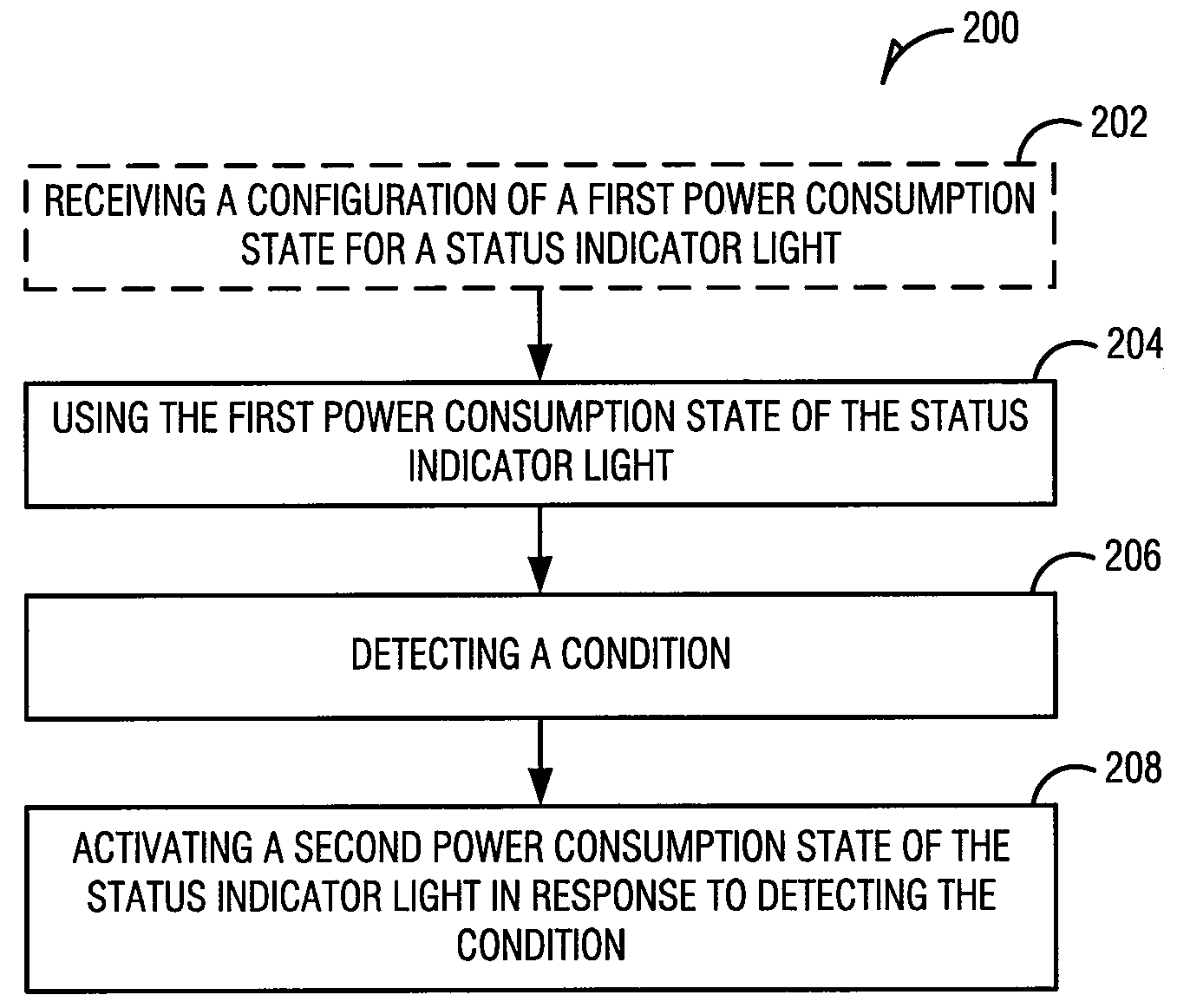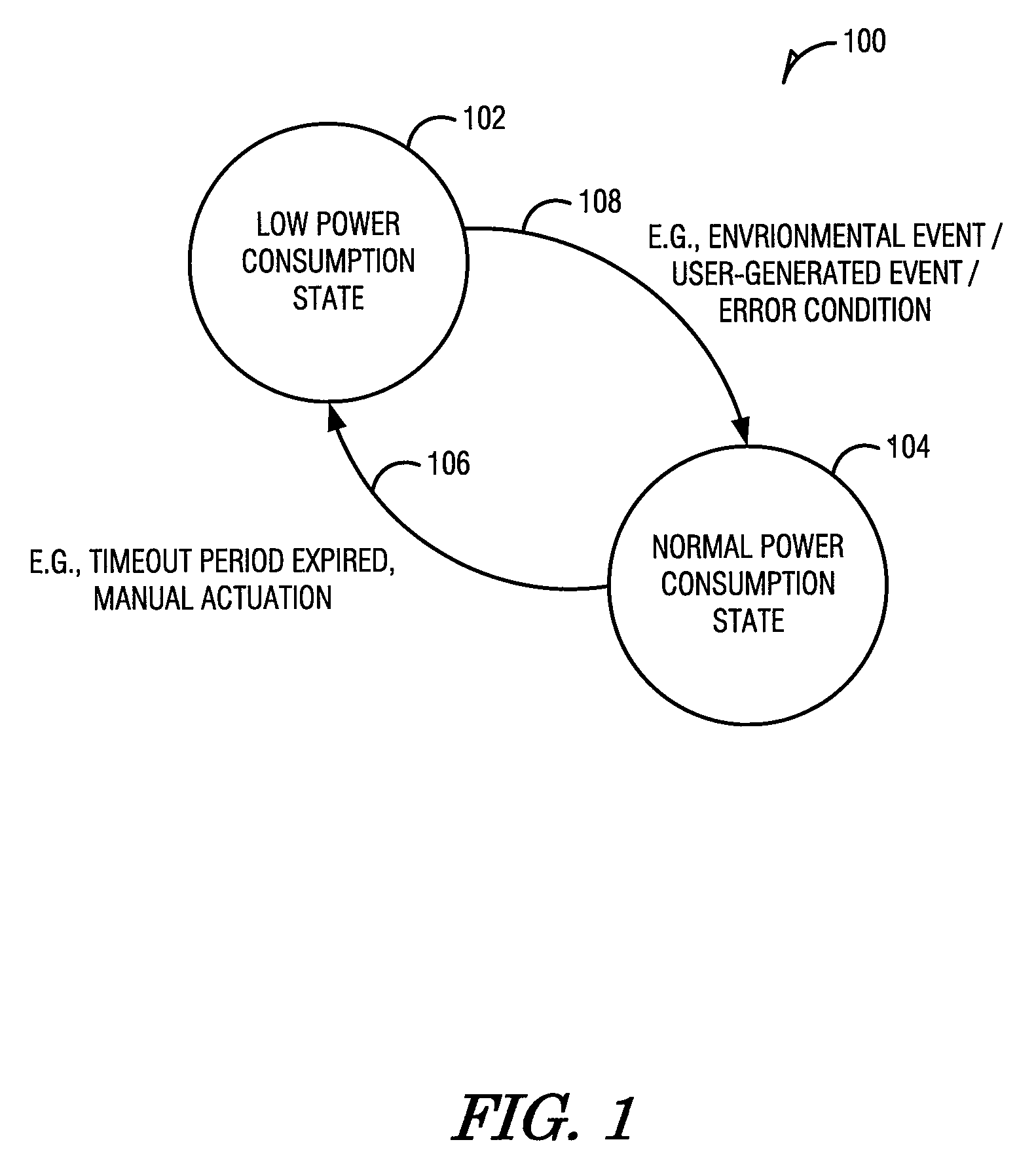Energy-saving status indicator
a status indicator and status technology, applied in the field of energy-saving status indicators, can solve the problems of significant cost, large energy waste in driving these unobserved leds, and significant cost of powering such lights and auxiliary services (e.g., cooling)
- Summary
- Abstract
- Description
- Claims
- Application Information
AI Technical Summary
Benefits of technology
Problems solved by technology
Method used
Image
Examples
example embodiments
[0037]The example embodiments described herein present methods and apparatus for implementing energy-saving indicator lights. One technique of providing energy-saving indicator lights includes configuring the indicator lights to be active using a configuration mode. For example, one configuration mode uses a single indicator light to indicate a general system status, thereby saving power by not illuminating additional indicator lights. In such a mode, when a condition occurs, such as an error, additional indicator lights may be illuminated to assist in troubleshooting and maintenance.
[0038]Another mode may use a blinking pattern to conserve power. For example, during normal operation, a link carrier detect indicator light may blink at 1 Hz (one short duty cycle pulse every second). The blink frequency may be configurable. In addition, the blink frequency may be constrained to avoid inducing medical conditions, such as photosensitive seizures in people with certain epileptic conditio...
PUM
 Login to View More
Login to View More Abstract
Description
Claims
Application Information
 Login to View More
Login to View More - R&D
- Intellectual Property
- Life Sciences
- Materials
- Tech Scout
- Unparalleled Data Quality
- Higher Quality Content
- 60% Fewer Hallucinations
Browse by: Latest US Patents, China's latest patents, Technical Efficacy Thesaurus, Application Domain, Technology Topic, Popular Technical Reports.
© 2025 PatSnap. All rights reserved.Legal|Privacy policy|Modern Slavery Act Transparency Statement|Sitemap|About US| Contact US: help@patsnap.com



